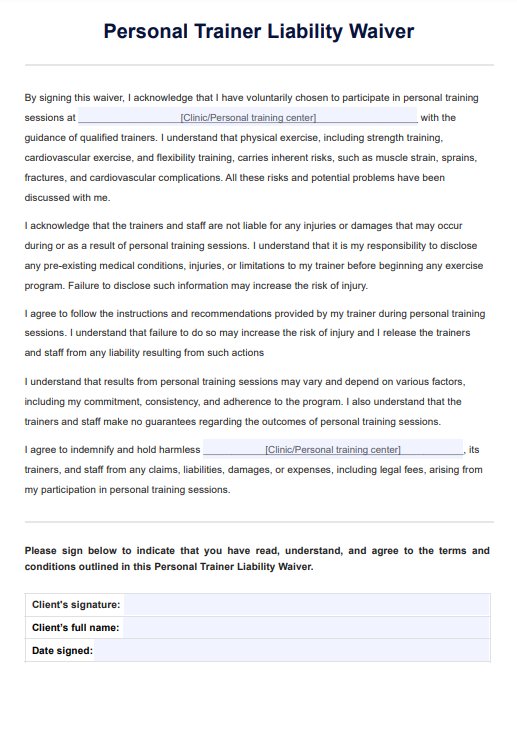Personal trainers, fitness centers, gyms, and anyone offering fitness training services can use these waivers.

Personal Trainer Liability Waiver
Looking for a Personal Trainer Liability Waiver? Understand what it is, how it works, and its benefits, and download a free PDF template.
Use Template
Personal Trainer Liability Waiver Template
Commonly asked questions
Before beginning any fitness program, regardless of whether it's one-on-one training or group classes.
They are presented to clients to read, understand, and sign before engaging in training activities.
EHR and practice management software
Get started for free
*No credit card required
Free
$0/usd
Unlimited clients
Telehealth
1GB of storage
Client portal text
Automated billing and online payments











